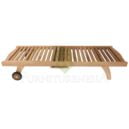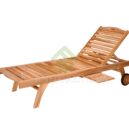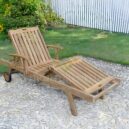Why Teak Wood is the Best Material for Outdoor Furniture?
Why is teak wood the top choice for outdoor furniture? Think of a patio table that survives decades of backyard parties, harsh winters, and rowdy kids. Teak’s strength isn’t about looks—it’s built into its DNA.
This wood comes from Tectona grandis trees in Southeast Asia. For centuries, its toughness made it ideal for ships. Today, it beats cedar, eucalyptus, and plastic for lasting beauty on decks, gardens, and pool areas.
Teak Wood Durability in Outdoor Furniture Design
Teak’s legendary durability starts beneath the bark. The wood’s heartwood—the dense inner core is saturated with natural oils and rubber. These oils, primarily tectoquinone, act as a built-in pest repellent and water barrier.
Unlike softer woods like pine or cedar, which absorb moisture and swell, teak’s oils repel water molecules. This makes it impervious to rot, even when left outdoors year-round in rainy or humid climates.
The wood’s tight grain structure adds another layer of defense. Measured at 1,070 lbf on the Janka hardness scale, teak is twice as hard as cedar (350 lbf) and eucalyptus (1,125 lbf). This density prevents warping, cracking, and splintering under heavy use. Unlike plastic, which can crack in the sun, teak develops a beautiful silvery-gray look over time. Many people love this aged appearance. This aging process requires no sanding or staining occasional cleaning.
Teak vs Cedar Eucalyptus Mahogany and Other Outdoor Furniture Materials
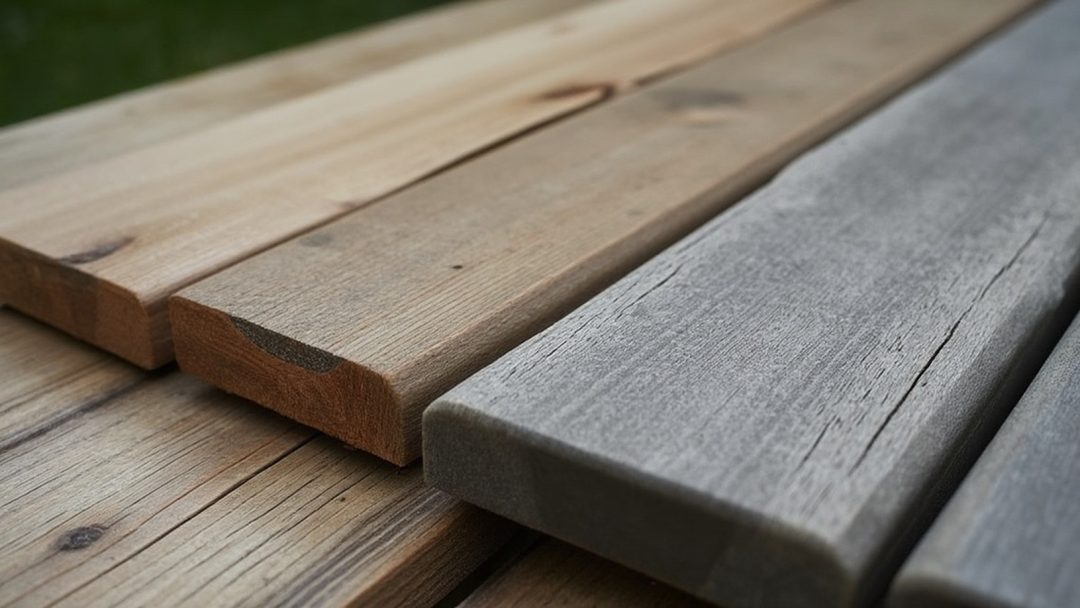
Choosing outdoor furniture often feels like balancing budget, style, and lifespan. How does teak compare to cedar, eucalyptus, mahogany, and synthetics? Let’s break it down:
Cedar:
- Pros: Lightweight and insect-resistant, with a pleasant scent that repels moths. Ideal for rustic porches or garden benches.
- Cons: Splits easily in dry heat. Demands yearly sealing to retain its reddish hue. Struggles under heavy use, like supporting sectional sofas.
Eucalyptus:
- Pros: Affordable and fast-growing, mimicking teak’s golden-brown tone when new. Popular for modern patio sets.
- Cons: Prone to cracking without bi-annual oiling. Rarely lasts beyond 10 years, even in shaded yards.
Mahogany:
- Pros: Boasts a rich, wine-red color that elevates luxury decks. Naturally termite-resistant and durable in humid environments.
- Cons: Requires frequent varnishing to prevent sun-induced fading. Costs match teak, but upkeep adds time and expense.
Synthetics (Polywood, Recycled Plastic):
- Pros: Splinter-proof and fade-resistant. Often crafted from recycled bottles, appealing to eco-conscious buyers.
- Cons: Cracks in freezing temps. Lacks the warmth of natural woodgrain, feeling “plastic” in cozy outdoor lounges.
Which suits your lifestyle?
Teak is tough and easy to take care of. It looks great and ages well, just like a fine wine. You won’t need to fuss with special treatments or replace it often.
Maintaining Teak Outdoor Furniture for Decades of Use
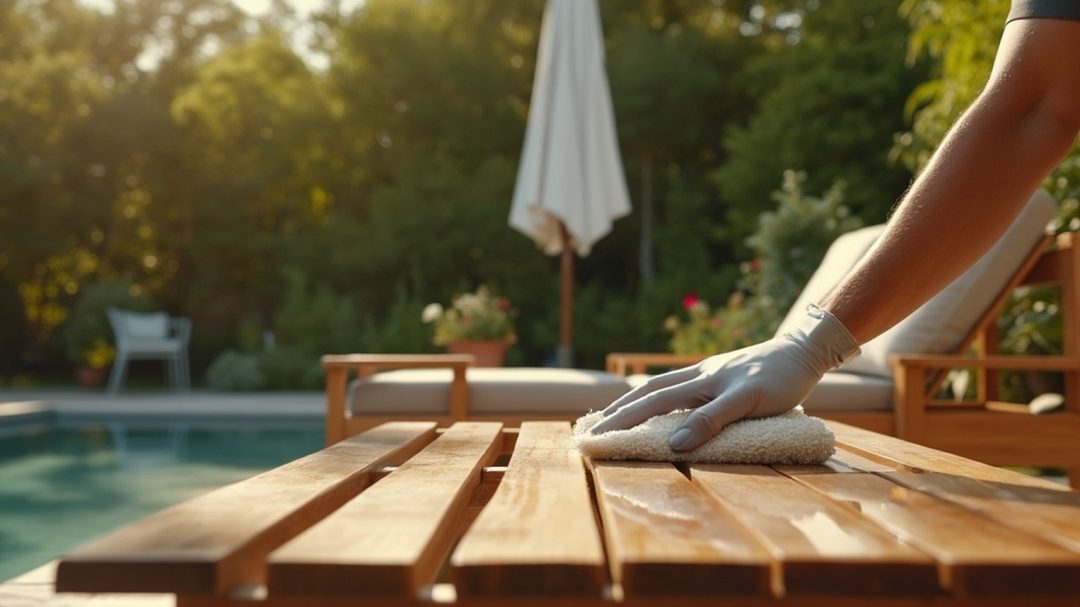
One of the best things about teak is how easy it is to maintain. But you need to do a little something to keep it looking good, even in tough weather like strong sun, heavy rain, and even snow. Let’s break down practical steps to preserve its strength and aesthetic appeal.
Seasonal Cleaning Guide
- Spring: Pollen and dirt accumulate after winter. Mix mild dish soap with warm water (1 cup soap per 2 gallons). Scrub surfaces with a soft-bristle brush. Rinse completely to prevent soap residue.
- Fall: Clear fallen leaves and debris from chair crevices or table legs. Lingering organic matter can stain the wood over time.
- Winter: While teak withstands snow, shake off heavy buildup to prevent dampness. Store fabric cushions indoors to avoid mildew.
Tackling Common Issues
- Mold in Humid Areas: Combine equal parts white vinegar and water. Spray affected spots, wait 10 minutes, then rinse. Vinegar kills spores without harming teak’s natural oils.
- Stubborn Stains: Baking soda works wonders on coffee or wine spills. Sprinkle it on the stain, scrub lightly, and rinse. Avoid bleach—it strips protective oils and dries the wood.
- Restoring Color: Prefer the original honey-brown hue? Sand weathered areas with 120-grit sandpaper. Apply a teak sealer to avoid trapping moisture.
Pro Tip: Place rubber pads under furniture legs if positioned on soil or grass. This minimizes ground moisture absorption, a common issue with softer woods like pine.
Want to go beyond the basics? Our guide on the best treatment for teak outdoor furniture will equip you with the knowledge and tools to achieve stunning results.
Sustainable Sourcing and Long-Term Value of Teak Wood
Ethical sourcing is more than a trendy phrase. It’s the key to keeping teak around for generations to come. In the past, illegal logging gave teak a bad name. But now, systems like Indonesia’s SVLK are changing the game.
SVLK stands for Sistem Verifikasi Legalitas Kayu. It ensures teak comes from legal and traceable sources. This system tracks timber every step of the way—from forest to factory. It makes sure no protected areas are damaged in the process.
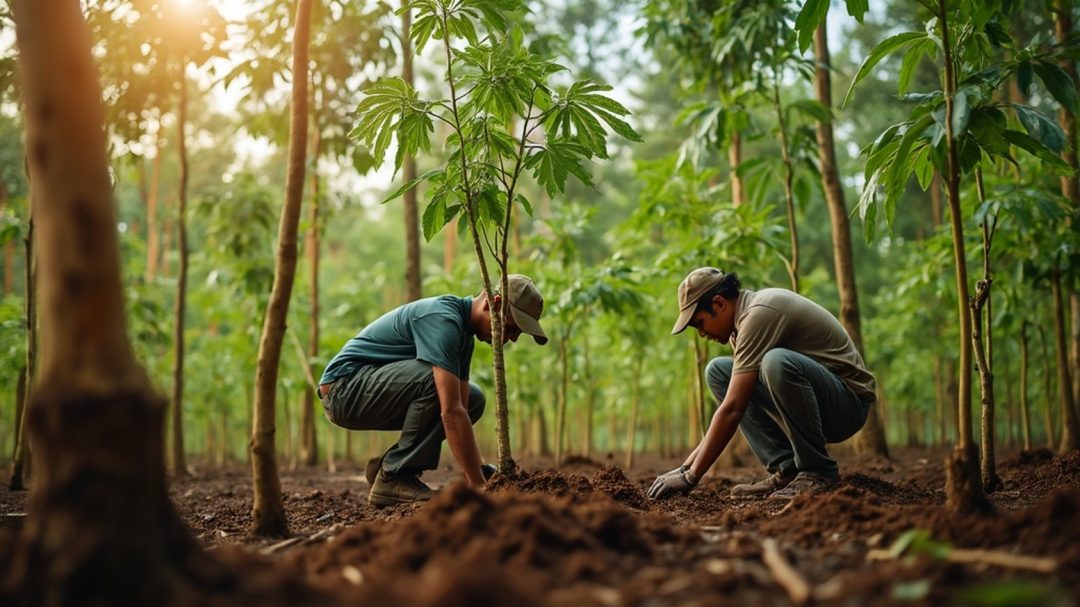
Teak plantations in Java and Central America take it a step further. They combine SVLK with FSC standards. For every tree they cut down, they plant three new ones. This approach protects nature while meeting demand. It’s a win-win for everyone involved.
Environmental impact, simplified:
- Teak: Biodegrades naturally. Even weathered benches can be sanded into garden planters or firewood.
- Recycled Plastic: Breaks down into particles that linger in waterways for centuries.
Let’s talk about the real cost of furniture. That $2,000 teak dining set might seem pricey compared to those $ 800 eucalypti or $1,500 plastic ones. But think about it: you’ll likely replace the cheaper options two or three times over 30 years. That adds up! Plus, teak often holds its value. You could even sell it for half the price you paid. But those plastic chairs? They’re going to end up in a landfill.
Teak is awesome because it’s both tough and stylish. It can handle the humidity by the pool but still look great on a modern patio. It’s more than just furniture – it’s an investment that will last for years to come.
Is Teak Furniture Worth the Investment?
Have you ever noticed how teak benches from the 1920s still stand strong in historic parks? Meanwhile, last year’s plastic chairs often crack in the summer heat. Sure, teak furniture may seem pricey at first. But its durability and classic charm make it a smart investment. Homeowners love it because they don’t have to keep replacing weak patio sets.
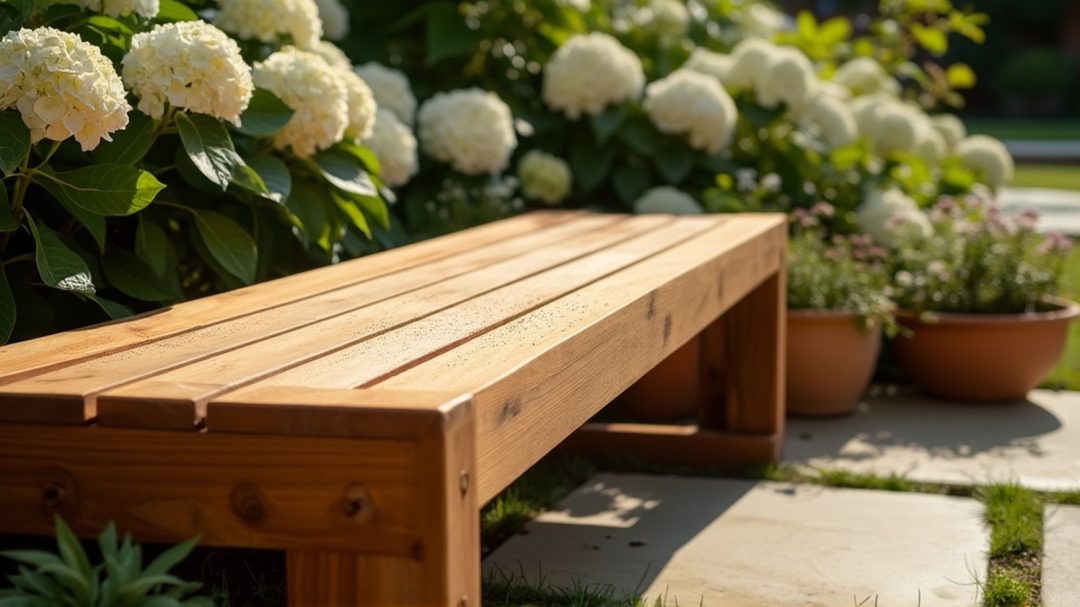
So, is teak worth the cost? Let’s take a closer look. This hardwood offers unmatched strength and style. It stays beautiful for years, even decades, with minimal effort. For many, that beats buying cheap furniture every few seasons.
Initial Cost vs. Lifetime Value
Teak furniture often costs 3–5 times more than cedar or eucalyptus pieces. A teak dining set might run $3,000, compared to $800 for a similar eucalyptus one. But here’s the twist: teak outlasts most materials by decades. While cheaper woods warp or rot in 5–10 years, teak withstands rain, humidity, and pests for 50+ years with minimal care.
Long-term savings:
- No annual sealing or staining costs.
- Avoid replacing furniture every few seasons.
- Resale value stays strong—vintage teak pieces often sell for 40–60% of original prices.
Effortless Maintenance Compared to Alternatives
Teak has natural oils that keep it safe without chemicals. You don’t need to treat it every year like cedar. Cedar can turn gray and patchy without a sealant.
Over time, teak develops a soft, silvery look. Many people love this natural change. It adds character and charm to outdoor furniture.
Synthetic options, like plywood, resist rot but have their issues. They can fade in harsh sunlight. Extreme heat or cold makes them weak and brittle.
Maintenance comparison:
- Eucalyptus: Requires oiling every 6–12 months to prevent cracks.
- Wrought Iron: Needs rustproof coatings to avoid corrosion.
- Teak: Occasional soap-and-water scrubbing suffices.
Aesthetic Flexibility and Resale Appeal
Teak’s warm, golden-brown hue complements rustic farmhouse decks or modern minimalist patios. Over time, it weathers to a soft silver that blends with any decor style. This versatility means your furniture stays relevant through design trends.
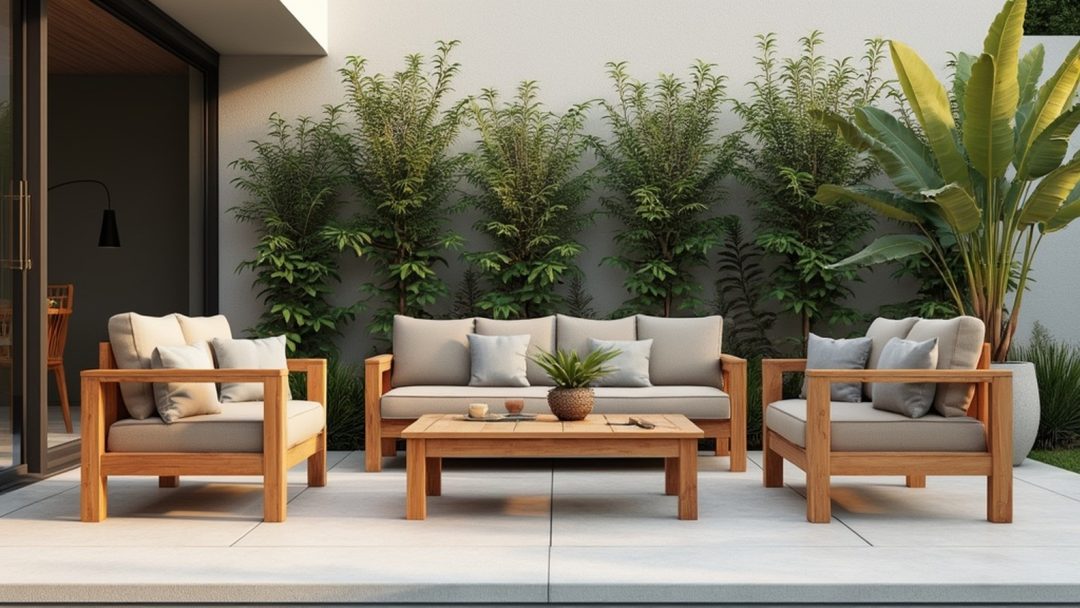
Is teak worth the splurge? If you want furniture that looks good as it ages, saves money over time, and supports eco-friendly values, then yes. For people who need a quick solution, cheaper options might work. But if you’re dreaming of a backyard that feels like a forever retreat, teak is a smart choice.
Teak is more than a material—it’s a legacy. Other options might save you money upfront, but they can’t match the teak’s strength or classic look. This wood is perfect for patios or decks, offering beauty that lasts for years.
Teak furniture is durable and easy to care for. It resists weather damage and keeps its charm over time. Imagine enjoying your outdoor space without constant upkeep. That’s the teak difference.
Want a space that feels relaxing and refined? Teak is the answer. As a teak wood furniture company from Indonesia, we craft high-quality teak pieces for every project. Let us help you create an outdoor area you’ll love for decades.
